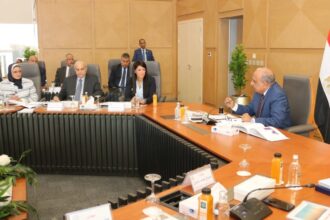Dutch Shell’s output from the Burullus and Rashid fields in the Mediterranean waters rose to 290m cubic feet per day (scf/day) up from scf/day of natural gas last month.
A source at the Egyptian Natural Gas Holding Company (EGAS) said that 80m scf/day from the second well of phase 9B in Burullus field has been completed, compensating for the natural decline.
He pointed out that the rate of natural decline in the productivity of Burullus and Rashid owned by the Dutch Shell is estimated at about 10m cubic feet of gas per month, due to the aging of wells and delays in the completion of development plans.
The source added that the maximum rate of production per well in phase 9B is 100m scf/day, which contributes to increasing production rates and compensates for the rate of natural decline.
The project includes eight production wells and two exploration wells. The linking of the second part of phase 9B will be completed in the coming fiscal year.
He pointed out that Shell is seeking to increase the production of Burullus and Rashid to about 320m scf/day by the end of the current fiscal year, compared with 290m scf/day.
He pointed out that the Egyptian General Petroleum Corporation pays $3.1 per one million thermal units of Shell’s share of natural gas produced from phase 9B in the fields of Burullus.
The Dutch Shell has allocated about $500m in investments during 2019/20, to implement several such as phase 9B project and the construction of a pipeline to link gas fields west of the Delta.
The proven reserves of Burullus fields in all stages and fields are estimated at about 5trn cubic feet of gas and about 55m barrels of oil condensate.
The source said that the maximum production capacity per well in phase 9B in the fields of Burullus is 50m scf/day.
The Ministry of Petroleum aims to increase the productivity of existing gas fields and complete the development of the discovered gas fields and accelerate the pace of work in order to put them on the production map, which contributes to the natural decline in the productivity of the old fields in addition to increasing the production rates of Egypt’s natural gas.




